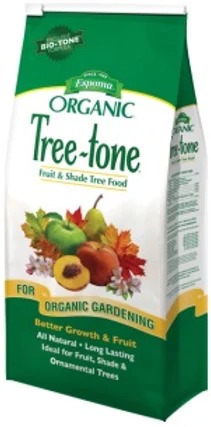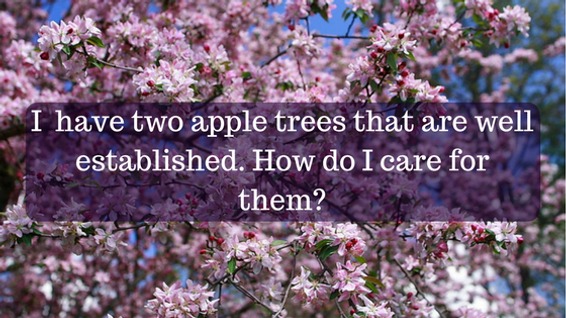Fruit trees of many varieties can thrive here in the Denver area – apples, peaches, pears, cherries and apricots just to name a few. These trees not only produce delicious fruit but also burst into glorious bloom early in the spring. Best of all, most fruit trees are a snap to care for! Here’s our basic crash course in fruit tree care.
Watering
Consistent watering is most important newly planted trees. Your mature apple trees probably get most of the water they need from their larger root systems, but to produce the best apples they still like a periodic deep soaking.
Pruning
Pruning always encourages new growth and all fruit trees can benefit from it. The best time to prune your fruit trees is in January or February, before they leaf out. This not only allows you to better see which branches need to be removed, it also helps stop the spread of disease. If you’ve had issues with fungus or disease the previous year, you should disinfect your pruners by dipping them into a simple solution of bleach and water between each cut to stop any fungus or bacteria from spreading.
When you’re ready to start cutting, first prune any dead or broken branches. Then, remove any branches that are rubbing together. Next, cut off any branches that are growing down or toward the center of the tree to maintain a nice upright shape. Finally, thin out some of the weakest branches to allow air and light to circulate to the interior of the tree. Don’t remove more than 1/3 of the tree’s branches. Any more than that can affect your harvest.

Fertilizing
Most home gardeners won’t need to fertilize their fruit trees, especially if the tree is growing in a lawn area where it probably gets all the nitrogen it needs from your lawn food. In general, it’s best to take an “If It Ain’t Broke” attitude when it comes to fertilizing trees. If the tree looks like it’s healthy and thriving, it’s probably getting all the nutrition it needs from the soil. If not, you can use a balanced, slow-release fertilizer like Espoma’s TreeTone in the spring.
Pests
Fruit trees are susceptible to a number of insect pests including aphids, scale, mites and the notorious coddling moth. If you’ve ever cut into a wormy apple, you’ve met the coddling moth – yuk! Fortunately, there’s a fairly easy and safe solution for all of them – dormant oil spray. Different types of oils have been used in orchards for hundreds of years and they are still a safe and effective way to manage garden pests. As the name implies, you apply the oil in the fall, right after the tree loses it’s leaves and just as it’is going dormant. The oil smothers all the eggs that were laid in the summertime, preventing them from hatching in the spring. Some oils, like the organic Neem oil, both kill overwintering eggs and fungus spores.
If you missed an application of dormant oil in the fall, there are some oils you can use after the tree leafs out. Or, after the tree blossoms, you can spray with a spinosad product like Bonide’s Captain Jack’s Dead Bug Brew. Spinosad is an organic pesticide. Be sure to spray spinosad in the evening to avoid contact with your local bees, who are pollinating away during the day but return to the hive after sunset.

